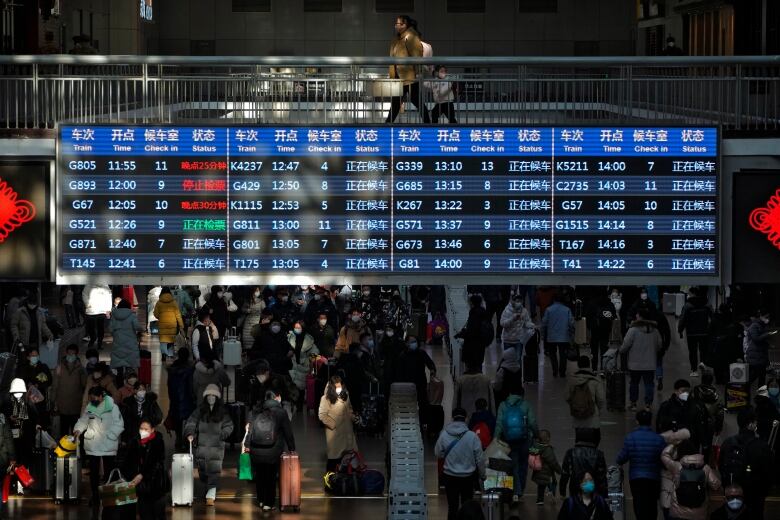China has announced its first population decline in decades as what has been the world’s most populous nation ages and its birthrate plunges.
The National Bureau of Statistics reported Tuesday that the country had 850,000 fewer people at the end of 2022 than the previous year. The tally includes only the population of mainland China, excluding Hong Kong and Macao as well as foreign residents.
That left a total of 1.41 billion, with 9.56 million births against 10.41 million deaths, the bureau said at a briefing on Tuesday.
Men also continued to outnumber women by 722.06 million to 689.69 million, the bureau said, a result of the now-abandoned one-child policy and a traditional preference for male offspring to carry on the family name.
China has long been the world’s most populous nation, but is expected to soon be overtaken by India.
The last time China is believed to have recorded a population decline was during the Great Leap Forward at the end of the 1950s — Mao Zedong’s disastrous drive for collective farming and industrialization that produced a massive famine killing tens of millions of people.
China’s population has begun to decline nine to 10 years earlier than Chinese officials predicted and the United Nation projected, said Yi Fuxian, a demographer and expert on Chinese population trends at the University of Wisconsin-Madison.
That means that China’s “real demographic crisis is beyond imagination and that all of China’s past economic, social, defence, and foreign policies were based on faulty demographic data,” Yi told The Associated Press.
One of the lowest fertility rates in world
Yi said that, based on his own research, China’s population has actually been declining since 2018, showing the population crisis is “much more severe” than previously thought. China now has one of the lowest fertility rates in the world, comparable only to Taiwan and South Korea, he added.
China’s looming economic crisis will be worse than Japan’s, where years of low growth have been blamed in part on a shrinking population, Yi said.
“China has become older before it has become rich,” Yi said.

The bureau said Chinese of working-age between 16 and 59 totalled 875.56 million, accounting for 62 per cent of the national population, while those aged 65 and older totalled 209.78 million, accounting for 14.9 per cent of the total.
India expected to be most populous nation in 2023
The statistics also showed increasing urbanization in a country that until recently had been largely rural. Over 2022, the permanent urban population increased by 6.46 million to reach 920.71 million, or 65.22 per cent, while the rural population fell by 7.31 million.
No direct comment was made on the possible effect on population figures of the COVID-19 outbreak that was first detected in the central Chinese city of Wuhan before spreading around the world. China has been accused by some specialists of underreporting deaths from the virus by blaming them on underlying conditions, but no estimates of the actual number have been published.
The United Nations estimated last year that the world’s population reached eight billion on Nov. 15 and that India will replace China as the world’s most populous nation in 2023.
In a report released on World Population Day, the UN also said global population growth fell below 1 per cent in 2020 for the first time since 1950.
Economic growth also down
Also Tuesday, the bureau released data showing China’s economic growth fell to its second-lowest level in at least four decades last year under pressure from anti-virus controls and a real estate slump.
The world’s No. 2 economy grew by three per cent in 2022, less than half of the previous year’s 8.1 per cent, the data showed.
That was the second-lowest annual rate since at least the 1970s after 2020, when growth fell to 2.4 per cent at the start of the coronavirus pandemic, although activity is reviving after restrictions that kept millions of people at home and sparked protests were lifted.






More Stories
Here’s what’s happening on U.S. campuses as student protests against Israel’s war in Gaza grow | CBC News
Reena Virk killer claims TV series based on crime ‘disrespectful’ to victim’s family | CBC News
Canadian man who died in Cuba mistakenly buried in Russia, family says | CBC News